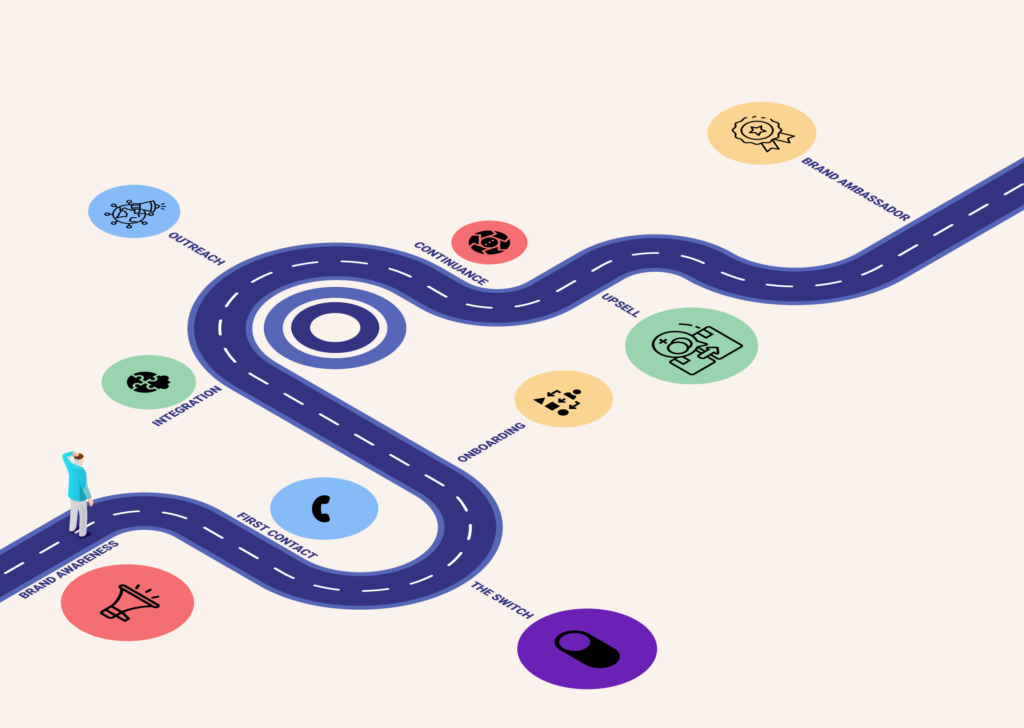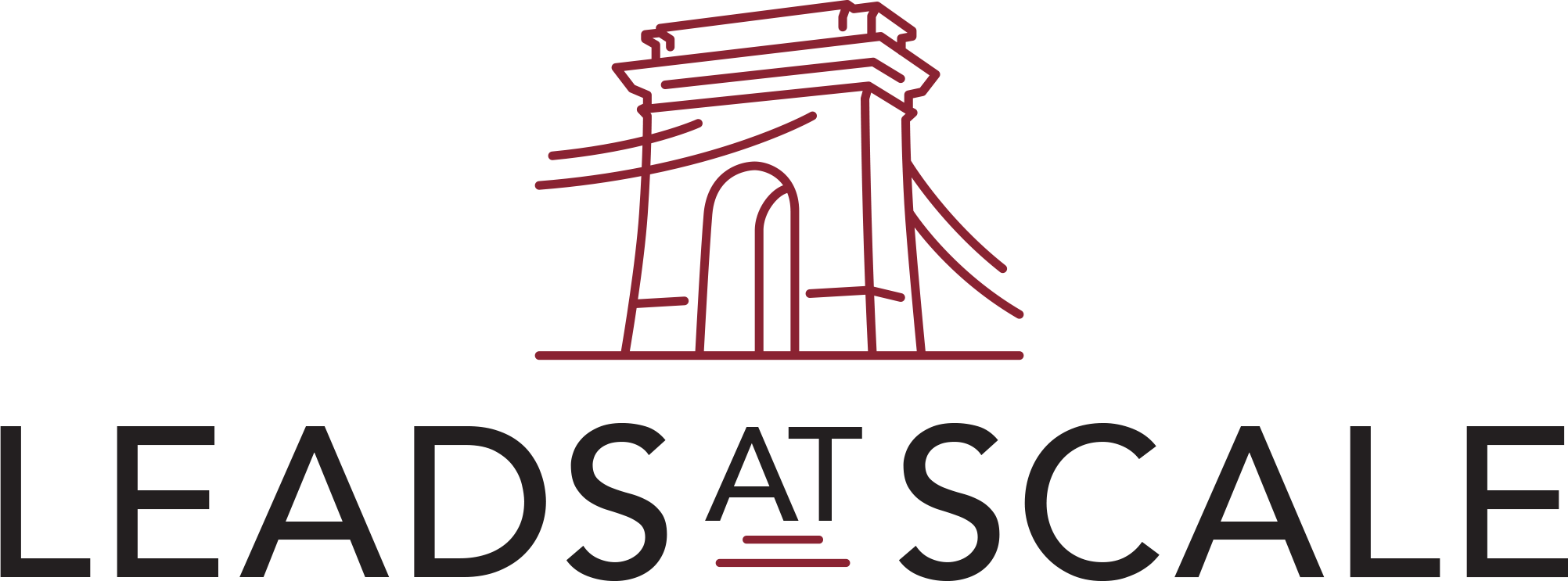If you’re hoping to reach more B2B customers with your marketing efforts, you’ve probably considered using a B2B lead generation service. While that’s a great idea (and a big part of what we do at Lead At Scale), you should first understand the B2B customer journey.
So, let’s take a look at the B2B customer journey map, so you can learn how your customers go from looking for information to signing on the dotted line, so you can adjust your process accordingly.
The Basics of B2B Customer Journey
You probably already know that there are defined steps in the customer journey. If you reach out too early, you might not be talking to your prospects when they are ready to buy. Too late, and you could miss the opportunity. So, whether you make calls yourself or use B2B cold calling services, you need to plan your outreach accordingly.

The basic stages in the B2B customer journey are:
Brand awareness
Your prospects know that your company exists, and they might see the value in your product or service.
First contact
Your prospects visit your website and possibly sign up for a free trial.
The switch
The first time your prospects choose a paid service.
Onboarding
The critical time when first using your product where customers learn more about what it can do.
Integration
Your customers have learned to use your product or service, and they integrate it into their business.
Outreach
Your clients want to get more from their purchase, so they reach out to get expert support.
Continuance
Your customers decide if they want to continue using your product and either renew their membership or cancel.
Upsell
Your customers love your tool, and upgrade their purchase or buy additional products and services.
Brand ambassador
Your customers love your product or service so much they become unpaid ambassadors for your brand.
As you can see, there are several steps between when your customers first learn about your business and when they become true fans of the product or service. Knowing when to reach out is crucial, whether you do so yourself or use a sales appointment setting service to streamline the process.
B2B Customer Journey Stages
Understanding the customer journey stages that every B2B customer follows will help to make your B2B lead qualification process a lot more successful and increase conversion rates. It’s important to note that some people will move through these stages very quickly, while others might take their time. There are three basic broad stages that you can categorize leads into:
- Learning – your customer knows about you, but is gathering information.
- Action – it’s time to make a decision – usually first a free trial or version.
- Commitment – your customer either commits to your product or service or moves on
To get the most bang for your marketing buck, you want to give prospects enough self-learning opportunities to move them through the learning stage. You’ll want to implement a B2B sales strategy during the action phase, and you’ll want to maintain communication and feedback channels during the commitment phase.
How B2B Customer Journey Differs from B2C Customer Journey?
B2B and B2C customers both have clearly defined journeys from discovering your brand to becoming a loyal customer, but there are some differences. These include:
- The B2C customer journey is often largely self-driven when customers “shop around” and research options
- B2B customers are much more likely to reach out and find out more about features, benefits, and options
- B2C purchasing decisions are personal, while B2B customer journey’s are usually a team event
- B2C sales processes tend to be more generalized, while your B2B sales strategy can target particular industries and even job types a lot more precisely
- B2C products and services are typically priced lower, while B2B products and services are often more expensive
- B2B customers are more focused on value and integration than price and emotional factors
- The B2B customer journey tends to be longer, but customer retention is better once the tool, product or service is entrenched in customer organizations and processes
In short, B2C customers are driven by emotional and personal choice, while B2B customers are more likely to consider ROI. The process may be longer in B2B, but customers are less fickle, and much more likely to stick with a solution that works for them for a longer time.
How to Create a B2B Customer Journey Map?
So far, we’ve looked at the B2B customer journey in broad strokes, but of course, it will be different for every industry, product type and customer type. So how do you create a B2B customer journey map for your own products and services?
To get started on your own B2B customer journey mapping, you should list all the stages we mentioned at the beginning of this article. Now ask yourself:
- What is my customer thinking, feeling, or doing?
- How can I help my customer to have a better experience during this stage of the process?
- What kind of obstacles does my customer face, and how can I help?
Once you have answered these questions, you can start to build a sales process that helps to move your customer through the various sales phases and processes.
Why is the Customer Journey Mapping Important?
B2B customer journey mapping is important because it allows you to understand what your customer needs and wants, and to tailor their experience accordingly.
Early on in the process, your customer is likely to need more personal resources, like videos, tutorials and blog content. It’s largely a process of self-driven discovery.
When your customer moves into the second phase of the journey, they are likely to want more information. Now would be a good time to reach out and offer assistance. Customers might still only have one or two questions, but they might be open to setting up an appointment to learn more.
Towards the end of the journey, your customer will have a lot more questions. Whereas you might be able to use an outsourced B2B lead generation service earlier in the process, this might be where your technical and sales teams take over. You’re likely to present your product, service, or solution to more people, and this might be where you dive deep into pricing options.
Ensuring that your sales and marketing strategies match B2B customer journey stages can make all the difference in the process of converting people from “just looking” to regular paying customers. You need to time your approach carefully, and a B2B customer journey map is one of the best tools to make sure that you do.
Analyzing and Improving Your B2B Customer Journey
As you already know, business is always evolving. You are constantly upgrading and improving your product. You set goals and targets based on your assumptions about business, sales, and marketing. Then you collect data to analyze those assumptions, review your approach and make changes along the way.
Using your B2B customer journey data to improve your conversions and increase sales is no different.
Early on in the process, you will base at least some of the map on your own assumptions, but as you use the map more, you will be able to compare those assumptions to actual customer information. This allows you to analyze and improve the B2B customer journey. So, make sure you build this into the process. You might consider:
- Keep a “living” copy of your B2B customer journey map that you update with information about the success or otherwise of your sales efforts.
- Build critical KPIs into your review and analysis process.
- Start by reaching out to customers along the journey based on your assumptions, but be open to trying different strategies.
- Review and compare the success of your various approaches – at which point along the buying journey are your customers most receptive to contact?
- Adjust your customer outreach and sales funnel based on the results of your analysis
The truth is, we all assume that we know when our customers want to speak to us, but the results may differ from what we think. Your customers might be more open to contact earlier or later in the process than you think and being there when they are might make all the difference.
Summing Up
Marketing and sales are so much more than just “throwing things at the wall and hoping they stick.” Using tools like the B2B customer journey map can help you to develop strategies that can be easily outsourced, automated, and streamlined. You’ll still be delivering what your customers need and want, but you’ll be spending less time and effort moving them along the process.
Services like Lead At Scale are a great way to ease the pressure on your internal sales team, and nurture leads earlier in the process. But you first have to be sure that you know what the stages of that process are. So, if you’re not already actively mapping the way your B2B customers make buying decisions, it’s a great time to start.
After all, there’s no such thing as too much data and information in business!



